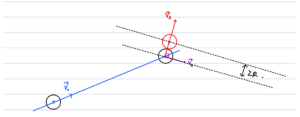This week we mostly stayed on schedule for our goals. All of our parts have arrived this week, and thus, we have started mainly working on the building of the pool table structure. The main items that we are working on are the IMU BNO055, the ESP32 WiFi module, and the shelf for the pool table. So far, we have not made any changes to the design of our system, and our schedule remains the same.
This week’s focus was refining the software of our project. Given that we managed to accomplish most of the items last week, this week we mainly focused on improving accuracy of those software items, as well as playing around with our new items that just arrived. Furthermore, we also built our shelf with the pool table, which was a significant step for our project.
All three of us managed to successfully build the shelf and combined the pool table together with that shelf. Andrew focused on figuring out the outputs to the projector, as well as got the integration with the BNO055 IMU done. Debrina focused on improving the accuracy of the computer vision detection models, and tried HoughCircles this week. Tjun Jet worked on successfully implementing the physics models, which he has successfully implemented and awaiting accurate detections to do a full testing. In the coming week, we hope to start mounting our cameras and projector onto the shelf, and thus, do a full loop testing from live video detection to actually outputting the detected trajectory onto the table.
Currently, the most significant risk is that our projector is not as high powered as we thought. When we tried to do the projection from the top, we realized that it is not very bright, even from the maximum power. Furthermore, to make it fit the pool table just right, we realized we have to elevate the projector, which may make it dimmer. Thus, we will look to adjust the lighting conditions such that this does not get worse. Furthermore, we realized that reflections in the balls make it harder for edge detection to be successful. Thus, we will probably have to invest in some sort of lighting and neopixels to ensure no shadows and reflections on the balls as much as possible, to yield the most accurate detection.
Here are some images of our progress for this week:



